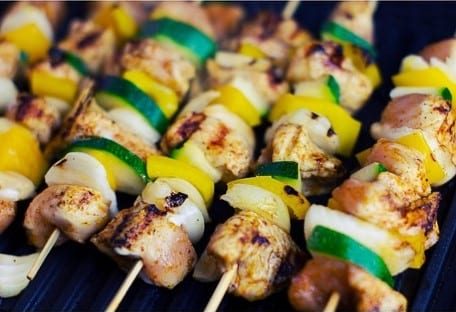By: Annabelle Shaffer, BS, Master’s candidate in the Division of Nutritional Sciences at University of Illinois Urbana-Champaign
Summer picnics are a wonderful way to spend time outdoors with friends and family, but if the food is cooked or stored improperly someone may become sick due to pathogens such as norovirus and salmonella. Every year, nearly 50 million people in the United States fall ill due to foodborne illnesses.1 Young children and older adults are the most susceptible populations. The good news is that with these tips your picnic can be safe for all!
Stay Clean2,3
- Always maintain clean hands, cooking utensils, and eating areas. Bring an alcohol-based hand sanitizer, clean utensils, and plates for raw and cooked foods, and a table cloth.
- Wash your hands frequently, especially after handling raw foods!
- Clean your produce at home and wrap in a bag prior to packing it.
Separation Is Key 2,3
- When packing coolers, pack one with raw meats, poultry, egg, and dairy and another with drinks and ready-to-eat foods. If you don’t have two coolers, be sure to wrap your perishable products in a bag to prevent leakages onto ready-to-eat items.
- When grilling meats and poultry, have separate plates and utensils for raw and cooked foods.
- If anyone in your party has food allergies, be sure to cook and store their food separately from allergen-containing foods.
Keeping It Cool 2,3
- Store your food in an insulated cooler with plenty of ice. Keep the cooler in the shade and refill with ice if the internal temperature rises above 40 degrees. At temperatures above 40 degrees, pathogens can grow rapidly.
- Foods such as meats, poultry, egg, and dairy products require special attention. Pack them in a separate cooler and don’t remove until cooking or serving time.Check the cooler’s temperature frequently.
Cook Thoroughly4
- To prevent foodborne illness, it is of utmost importance to cook your food to the proper internal temperature. Cooking foods to the proper temperaturehelps control harmful bacteria.
- Ground beef, such as hamburger: 160 degrees
- Chicken or turkey meat, such as breast or thigh: 165 degrees
- Steak: 145 degrees
Store It Safely 2,3
- Foods should not be left outside for more than 2 hours. If the outdoor temperature is above 90 degrees, be careful to not leave food out for more than 1 hour. Set a timer on your phone!
- If you have leftover food that was not outside for more than 1-2 hours, you can save it for later by refrigerating it as soon as you come home. If the food was left out for longer, discard the items for your safety.
Barbecues and picnics are a fun way to spend the day, but follow these tips to keep your day food safe!
References
- Burden of Foodborne Illness: Findings | Estimates of Foodborne Illness | CDC. Cdc.gov. https://www.cdc.gov/foodborneburden/2011-foodborne-estimates.html. Published 2019. Accessed June 30, 2019.
- Perfect Food Safe Picnics! | FoodSafety.gov. Foodsafety.gov. https://www.foodsafety.gov/blog/perfectfood.html. Published 2019. Accessed June 30, 2019.
- Handling Food Safely While Eating Outdoors. U.S. Food and Drug Administration. https://www.fda.gov/food/buy-store-serve-safe-food/handling-food-safely-while-eating-outdoors. Published 2019. Accessed June 30, 2019.
- Complete List of Cooking Temperatures. Eatright.org. https://www.eatright.org/homefoodsafety/four-steps/cook/complete-list-of-cooking-temperatures. Published 2019. Accessed June 30, 2019.
Photo by Canva.















